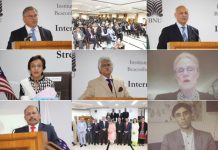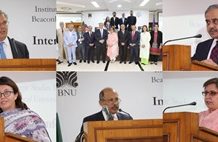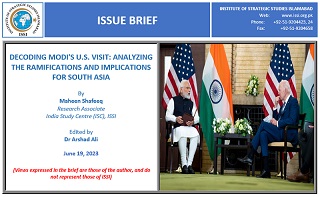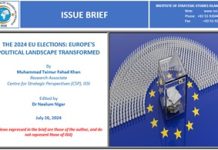On 10 May 2023, a press release from the White House announced that President Joe Biden and First Lady Jill Biden will host Indian Prime Minister Narendra Modi for an Official State Visit.[1] The visit, expected between June 21-24, 2023, is to affirm the deep and close partnership between Washington and New Delhi. The press release broadly stated three strategic objectives of the visit. First, the joint commitment of the two nations for ensuring free and secure ‘Indo-Pacific’ region. Second, the elevation of strategic technology partnerships. Third, expanding educational and people-to-people ties, and confronting mutual challenges such as workforce development, health security and climate change. The visit comes at a time when India has, through several moves, implied its lack of willingness to accommodate the U.S.’s strategic vision. India’s current posture towards China at best suggests strategic ambiguity; therefore, despite Washington’s unconditional and unrestrained support, New Delhi would seemingly not be ready or able to counter the ‘dragon’ at its doorstep. On the other hand, the U.S. support to India will further regional instability, especially between India and Pakistan.
Notwithstanding the democratic backslide, internal fissures, human rights violations, minority rights abuses, heightened censorship, and rising populism at home, the BJP government continues to focus on its external front and tout foreign policy ‘achievements.’ The forthcoming visit would be President Modi’s first Official State Visit to the United States. The visit holds significant importance as prior to PM Modi, only two Indian leaders President Radha Krishna (1963) and Prime Minister Manmohan Singh (2009) have been on Official State Visits, while other prominent Indian leaders such as Jawaharlal Nehru, Indira Gandhi and Atal Bihari Vajpayee not been invited on a State Visit.[2] During this visit, he will be attending a state dinner, the U.S.-India Business Council conference, and addressing a Joint Session of Congress (for the second time). Accepting the invitation to speak at the Joint Session of Congress, Mr. Modi tweeted: “India was proud of the Comprehensive Global Strategic Partnership, shared democratic values, ties and support for global peace.”[3] Prior to the visit, the stage is being set by visits of high-level U.S. officials to India, such as U.S. Defence Secretary Lloyd Austin and National Security Advisor Jake Sullivan, to decide which deals will be signed and announced.[4] The U.S. hopes that the visit will ‘consecrate’ India as an important partner, and the Indian government hails the visit as ‘historic.’[5]
















